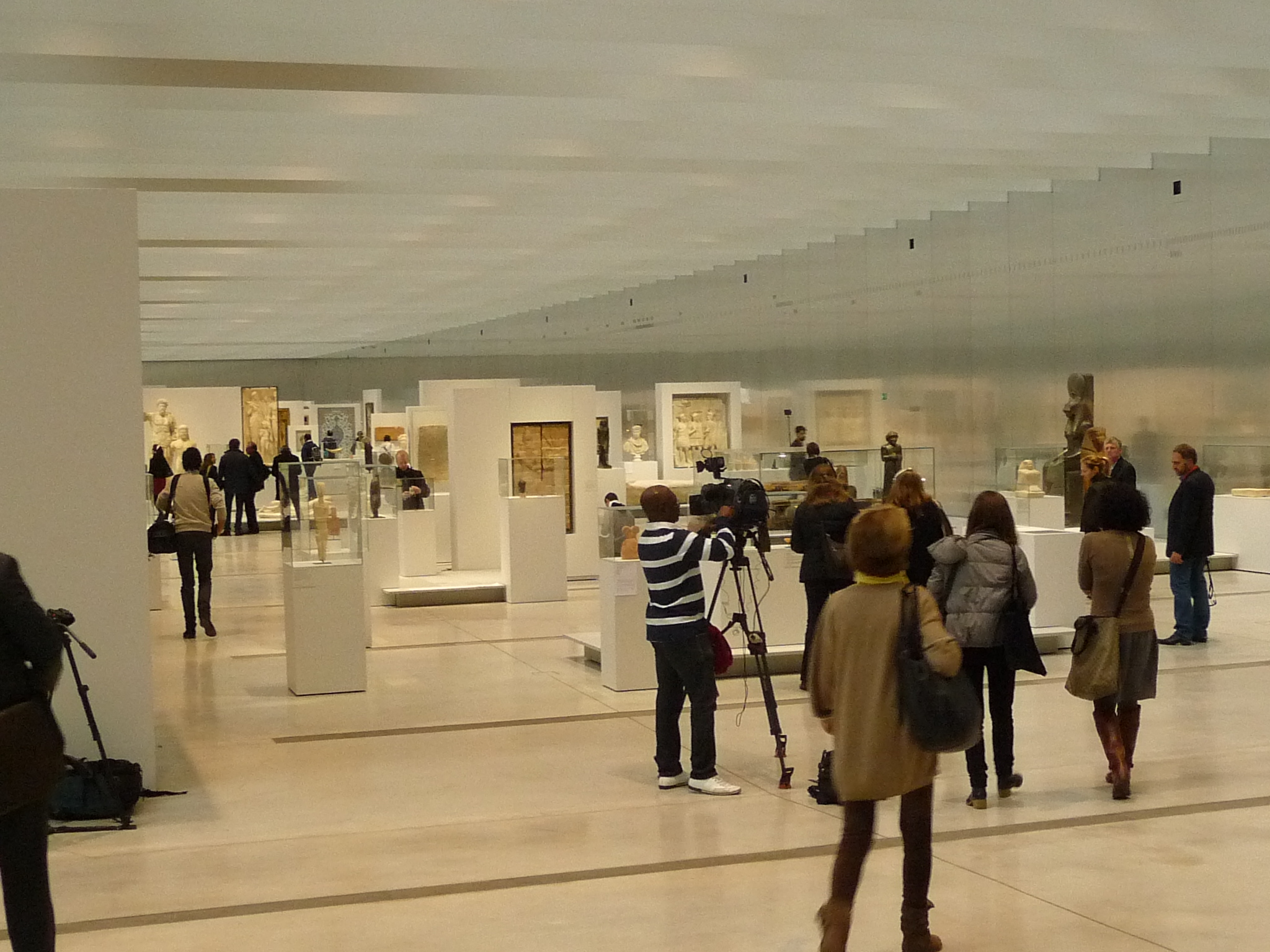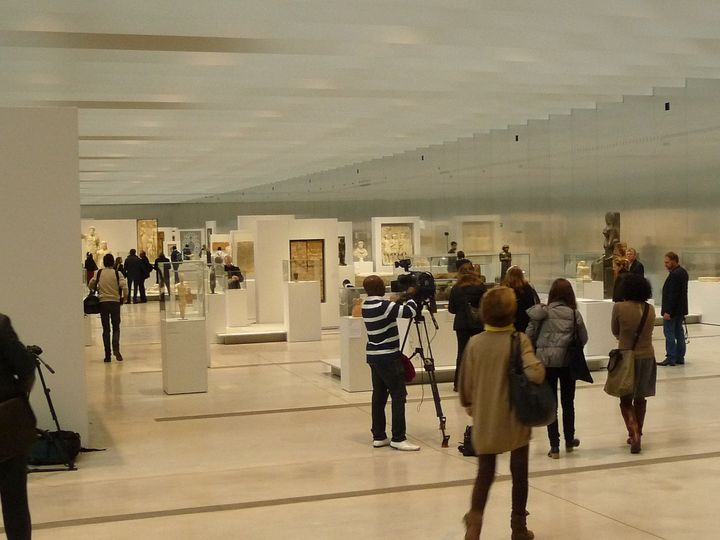
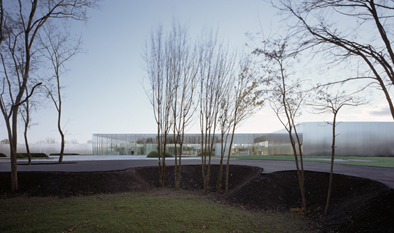
--(c) SANAA / Kazuyo Sejima et Ryue Nishizawa -- IMREY CULBERT / Celia Imrey et Tim Culbert -- MOSBACH PAYSAGISTE / Catherine Mosbach Photographie (c) Hisao Suzuki
Look at all the European tourist plans that American college kids have studied for the last century and one building stands out beyond all the rest: the Louvre, home as well to the most famous painting in the western world: La Jaconde or the Mona Lisa. The Louvre, whose first stones were laid as a palace for the French King Francois I in 1546, housed all the Louis but Louis 16th, who had his head chopped off during the Revolution of 1789. But if the kingdom of France ended then, followed by endless architectural revisions up to I.M. Pei's glass pyramid and the new Islamic art courtyard, the idea of the Louvre as the single greatest repository of Western power and civilization remains intact.
Now the Louvre is on the move -- to the east on Saadiyat Island in Abu Dhabi and to the north of France on top of an abandoned coal mine in the little town of Lens. Two lesser appendages of the Louvre collection have done time in the Denver Art Museum and Atlanta's High Museum.
The latest Louvre at Lens (near Lille) which opened this month, is a breathtaking building designed by the Pritzker prize-winning Japanese SANAA team. Sheathed in glass, its bare inner walls are lined with softly polished aluminum. Its opening exhibition houses many of the Palace's (as they refer to the Louvre's Paris headquarters) most famous pieces -- from Egyptian mummy boxes to Da Vinci's "Virgin and Child with Saint Anne." Unlike the dwarfing monumentalism of the Louvre Palace, where the caramel weight of a faded empire bears down on every square centimeter, this new Louvre-on-a-coal mine is as light and airy as a Nordic cloud.
That is where the politics of power art faces a crossroad.
Adrien Gardère, one of the designers (he calls himself a "scenographer") who linked up with the curators who put the new museum together, calls Lens a laboratory for the Louvre collection. Increasingly management have cast aside calling the Louvre a Parisian museum. The Louvre, says its president Henri Loyrette, is "a national collection with international importance." The same could be said of the Met in New York or the British in London though the Louvristes say that theirs is the largest in the world. But they are also saying something more: The Louvre is France. The Louvre is both the tangible assemblage of art and the idea of France -- from Charlemagne to Rousseau and les philosophes to Corot, and the countryside to Delacroix's bare-breasted "Liberty Leading the People." Translated, they are also saying that the Louvre is the testament of Western Civilization.
But Gardère and the current team say that with Lens they're trying to do something else -- to break down the centralized system that is as French today as it was in the last days of Louis XVI. Like the British Museum, with its aisle and aisles of mummies and marble statuary looted from Greece and Egypt during the peak of empire, the subtext of a visit to the old Louvre was the visually documented story of great power: Look where we have gone, see where we rule, observe the rules conquest and how the story of conquest is to be told.
"The Louvre after the Revolution was encyclopedic," Gardère acknowledges. An all-embracing story of the world told from the hearth of power for the education of the provincials and the outliers. "That's not what we're doing here," he says; "this is a more democratic Louvre where the visitors in this poorest part of France can come in and see the story of the art in many ways. Here we are trying to offer people a different reading of the work -- a less Jacobinist one," that identifies the state as the sole identity of the people.
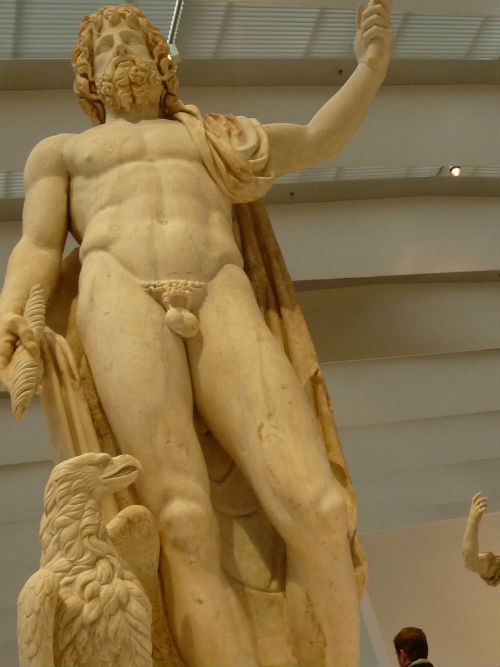
Leading a clan of foreign journalists through the main exhibition hall, Gardère points out the multi-directional organization of several works. One diagonal is a series of classical 18th and 19th century landscapes -- a sublimely pastoral scene by Corot, a trinity of moats and bridges leading to the Villa Medici in Rome and a wide-angle of the Bay of Naples: The post-Enlightenment Europe dominated by France. But on an intersecting diagonal are three portraits of power during the same period: Nasir al-Din, the 50-year-long, 19th century shah of Iran, followed by Fat'h Ali Shah Qajar, brother of the Aga Kahn, concluding with Ferdinand-Philippe, the Duke of Orleans and pretender to the restored French monarchy. On the other hand, looked at laterally, the works can be seen simply as changes in the art of portraiture.
Because the artworks are not fixed on a wall where they tell a single story, the relation of art to history to power presents the possibility of multiple "readings." The effort in building the walk-around displays of art, Gardère argues, "was to break the encyclopedic form of 'entries,'" -- where to start a story and where to end it. By breaking the displays away from the strict artistic categories -- sculpture, painting and objets d'art as presented in classical museums like the Louvre -- and replacing them with multiple stories, or sometimes by geography, the attempt has been to break down traditional hierarchies of power, art and learning. Gardère walks his group back and forth between a half-dozen displays of painting, drawing and sculpture leaping thorugh millennia from the Louvre collection: The non-encyclopedic organization of work, he says, "pays more attention to the geographical sites [where the work came from]... Here stepping into the Gallery of Time you understand that when the Egyptians, the Sumerians and the Assyrians were building cities and palaces, the Greeks were hardly starting to mold little clay icons, and it took thousands of years before the Greeks were able to create an empire that formed the structures that influenced western art."
None of which is to say that the Louvre, which continues to regard itself as the world's richest, most encyclopedic, most scientific collection of art, in any way intends to diminish its focal length on the story of western civilization. Its story begins in the Mediterranean basin, swirls eastward only so far as the Indus, as far north as the Baltic and barely tips a toe into Anglo-Saxony -- despite reserving a few square meters in the back to contemporary folk art of the Benelux region.
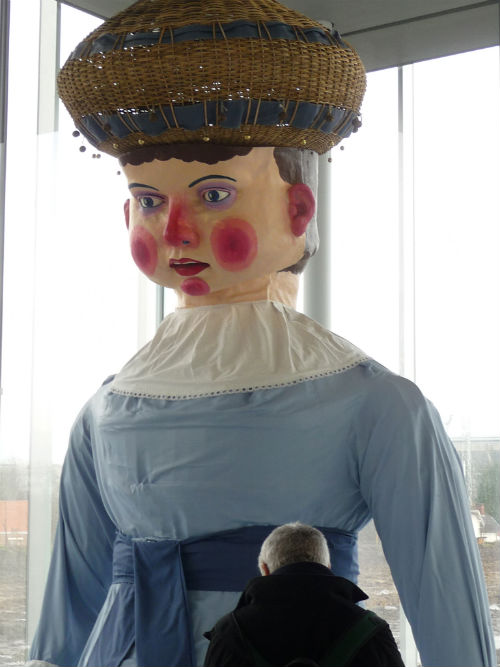
But more than ever before, the old unitary story of power and representation that it has advanced for the last half millennium is offering new and more supple points of penetration than its formal masters have so far allowed.
That it should take place alongside slag heaps and coal tipples in a town frequently described as France's "black hole" shows promise.
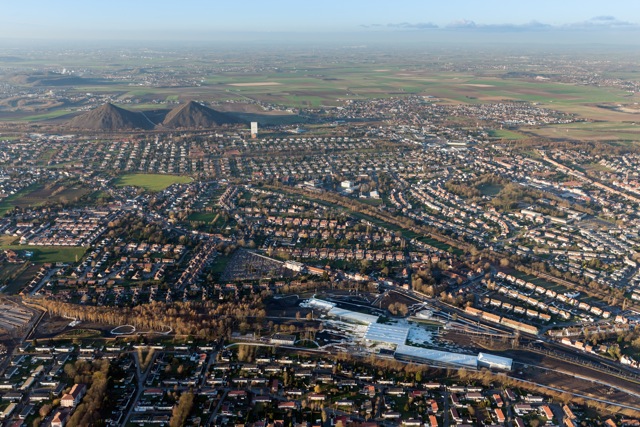
Co-auteurs du Musée du Louvre-Lens : (c) SANAA / Kazuyo Sejima et Ryue Nishizawa -- IMREY CULBERT / Celia Imrey et Tim Culbert -- MOSBACH PAYSAGISTE / Catherine Mosbach Photographie (c) Iwan Baan
Interior photos credit Frank Browning 2012

